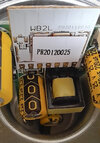WTF.
We go from interchangable Incandescent/Halogen disposable bulbs - to modern super energy efficient LED fittings, however in the great plan someone forgot to add the ability to just swap out the LED element in the event of failure, so now when the unit fails someone has to get up a ladder with tools, unravel cable from various conduits, unscrew or bolt the whole unit, then that carefully constructed pile of metal, glass, wire and circuitry goes off to either a) landfill, or b) inefficient WEE recycling. In addition he/she then needs to travel to source a replacement, and go fix it up.
Is this such a lamps destiny, or can it be salvaged, any thoughts to cirumvent such madness.
These two destined for an early grave otherwise:




We go from interchangable Incandescent/Halogen disposable bulbs - to modern super energy efficient LED fittings, however in the great plan someone forgot to add the ability to just swap out the LED element in the event of failure, so now when the unit fails someone has to get up a ladder with tools, unravel cable from various conduits, unscrew or bolt the whole unit, then that carefully constructed pile of metal, glass, wire and circuitry goes off to either a) landfill, or b) inefficient WEE recycling. In addition he/she then needs to travel to source a replacement, and go fix it up.
Is this such a lamps destiny, or can it be salvaged, any thoughts to cirumvent such madness.
These two destined for an early grave otherwise:
Last edited:


